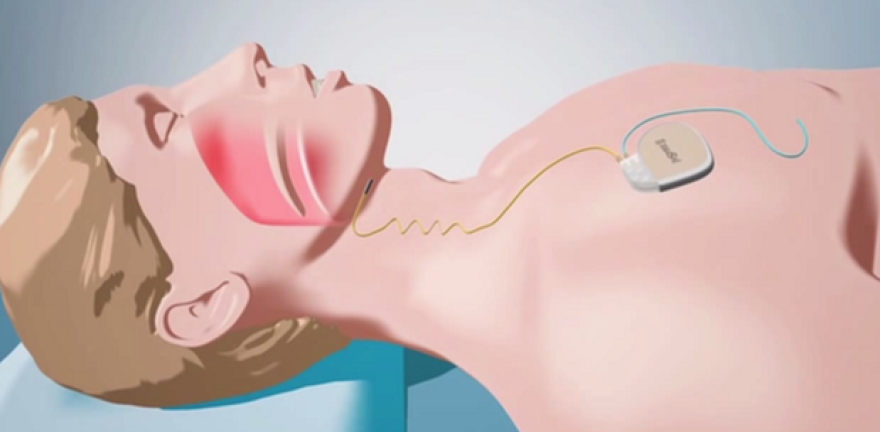Researchers have identified a new treatment option for people suffering from sleep apnea, a common disorder that causes multiple pauses in a person’s breathing during the night. And, this new approach is repurposing an old technology.
Surgeons have been implanting pacemakers since the late 1950s. They’re most commonly associated with treating heart disease by regulating a person’s heartbeat. But now the same technology could offer hope for people with sleep apnea.
The condition can increase people’s risk of heart disease, stroke and high blood pressure if left untreated, and co-author of the study Dr. Ryan Soose says it’s time more personalized treatments were available.
Soose and his team from the University of Pittsburgh Medical Center used pacemakers to regulate breathing at night for 126 sleep apnea patients. Ansd, Soose says, the treatment relieved sleep apnea in two thirds of people tested.
“It’s the same technology it’s just used in a completely different application. And it’s really interesting and exciting because we haven’t really had a fresh and new treatment option like this that has the effectiveness and the acceptance and the adherence by the patients as this has, in a long, long time.”
Soose says traditional treatment options like the CPAP (Continuous Positive Airway Pressure), a breathing machine that requires wearing a mask at night, can be uncomfortable for patients. They tend to be used irregularly or not at all after a while.
On the other hand, he says, more than 90 percent of people in the study’s trial who had a pacemaker implanted continued to use it regularly over a 12 month period.
How it works:
A pacemaker with two wires is implanted on the right side of the chest. One wire sits against the rib cage monitoring breathing patterns.
“Based on those breathing patterns the pacemaker supplies a timed and gentle stimulation to the nerve that works the tongue,” Soose says.
He says the stimulation sent to the tongue causes it to move forward in the patient’s mouth. This opens their throat and allows them to continue breathing.
The pacemaker can be turned off during the day while the patient is awake, and Soose says the new treatment could be accessible to the public within the next 12 months.
Sleep apnea affects roughly 12 to 18 million people in the U.S. alone, and millions more likely go undiagnosed.



